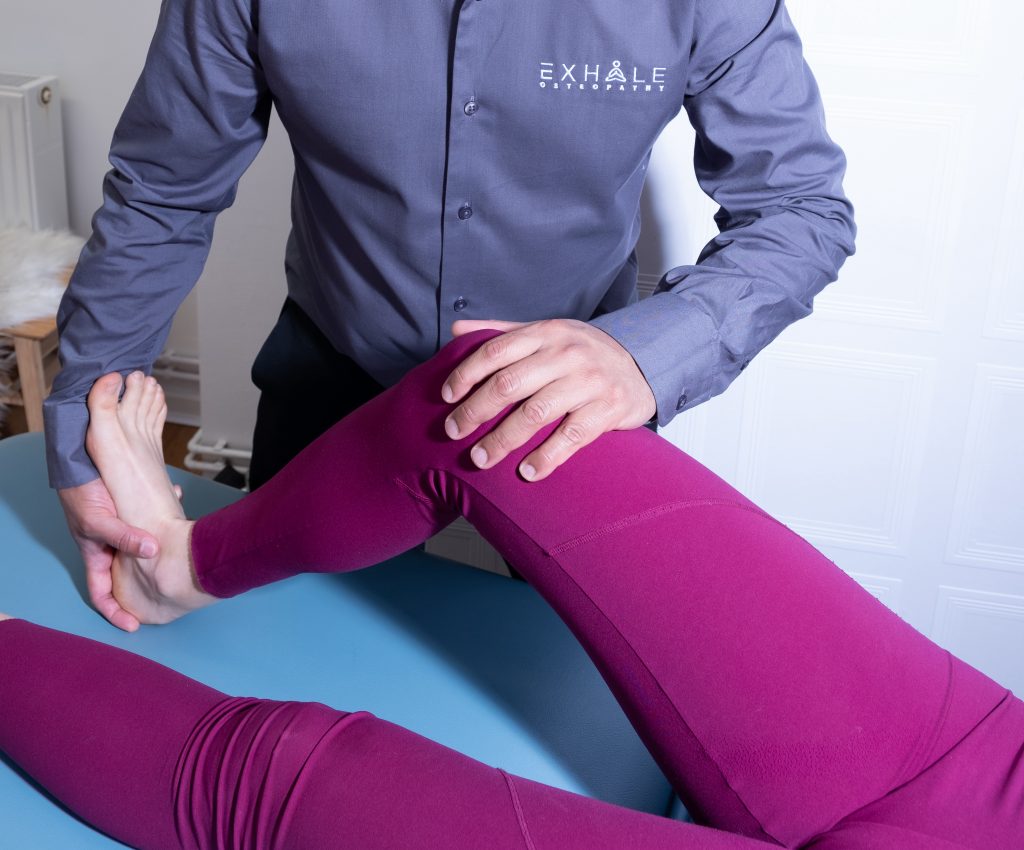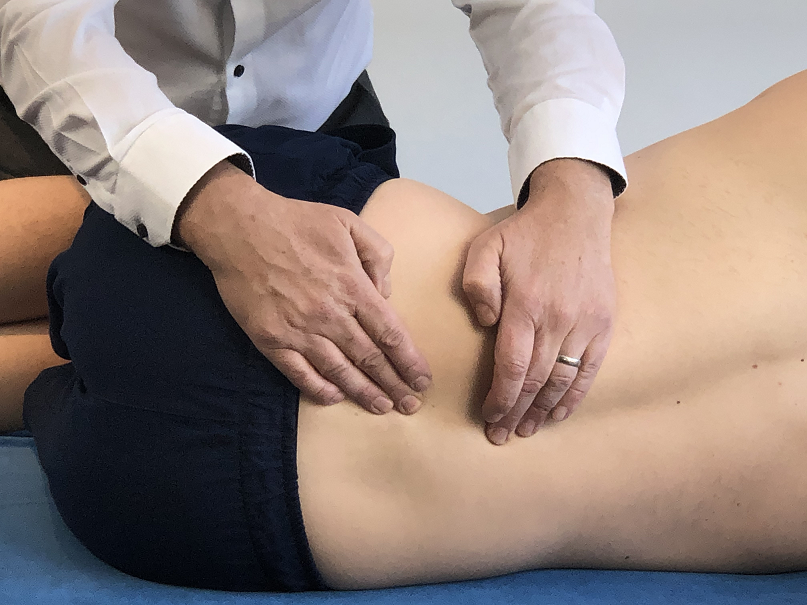Osteopathy
Osteopathy can help effectively treat back pain, neck pain and many other musculoskeletal symptoms by understanding the origin of your pain. At Walsall Osteopathic clinic we provide treatment for you, your children, sports team and business.
What is osteopathy ?
Osteopathy is a form of manual medicine that focuses primarily on diagnosing and treating problems with the musculoskeletal system.
Manual medicine means that both a diagnosis and treatment are achieved through non-invasive means – so no surgery or medication. Instead an osteopathic practitioner will detect the cause of your problem by analysing the way your body moves, by both a visual assessment and by touch.


Can Osteopathy Help Your Condition?
At Walsall Osteopathic Clinic , our highly skilled osteopaths will create a treatment plan to suit the needs and preferences of each individual patient. This allows us to treat almost everyone, from babies, children to older adults. It can be very gentle, for nervous or vulnerable patients, or more robust techniques may be appropriate for sports injuries and younger adults. Osteopathy is an effective treatment for:
- Restricted and painful back conditions
- Neck and shoulder pain discomfort
- Sciatica and other nerve problems
- Muscle and joint strain
- Frozen shoulder
- Disc problems
- Foot pain
- Arthritis
- and many more conditions
Treatment
Osteopathy involves hands on treatment (sometimes deep tissue) to relax tight and painful muscles, ligaments and tendons. It also involves the stretching and articulating of restricted joints, and can also include manipulation (short quick movements that can produce a clicking sound) for freeing up restricted joints.
Diagnosis
Osteopathy addresses problems with the body’s bones, joints, tendons, ligaments, muscles and nerves and how they affect one another. It is important that a thorough examination and diagnosis is made to identify the underlying cause of your condition. This diagnosis is arrived at by taking a comprehensive medical case history of your complaint of how and when it started, and also asking about any other health conditions you have or have had.
A physical hands-on examination is then performed which involves assessing how tight your muscles are and the range of movement of your joints and your general posture. Some medical tests may be carried out, like blood pressure and reflexes if necessary.
The osteopath’s aim is to understand the underlying causes of your condition and what led to it. This enables the osteopath to not only treat the presenting symptoms, but correct the underlying causes and thereby prevent the condition from recurring. For example, knee pain is often the result of a weakness in feet, knees or hips, and pain in shoulders and arms can be a result of a trapped nerve in the neck.
What training do Osteopaths have to undergo?
Osteopathy is a regulated profession meaning it is illegal to call oneself an osteopath or offer osteopathic treatment if not registered with the General Osteopathic Council. To become registered with the General Osteopathic Council, osteopaths need to have an Osteopathic Degree.Studying for a Degree in Osteopathy takes four years full-time or five years part-time.
After graduating, every osteopath has to complete many hours of additional training (continual professional development) every year.
Osteopathy FAQ's
Osteopaths’ patients include the young, the more mature person, manual workers, office professionals, pregnant women, children and sports people. Patients seek treatment for a wide variety of conditions, including back pain, shoulder/neck pain, knee, ankle pain, repetitive strain injuries, changes to posture in pregnancy, postural problems caused by driving or work strain, the pain of arthritis and minor sports injuries.
These three therapies are quite similar, but there can be some overlap between the disciplines. One common goal is to reduce a patient’s pain, this is achieved by improving the patients structure and function. Each therapy has its own philosophies and treatment approaches so that these common aims are achieved.
Chiropractors are fairly similar to Osteopaths, their philosophy is that everything needs a good nerve supply where as osteopathy suggests that all body function is in harmony with a good blood supply! However Chiropractors do seem to manipulate the spine more whereas Osteopaths do seem to use a greater range of techniques, not only manipulation. Such techniques involving stretching, massage, articulation (mobilisation). Most Chiropractors work on 10-15 minute consultations whereas osteopaths generally work on 30-40 minute appointments, this normally results in less frequent treatments.
As a general rule Physiotherapist are less hands on compared to Osteopaths and Chiropractors. Treatment is based on using more machines such as ultrasound, laser therapy and interferential. They do allocate exercises to do at home as do Osteopaths and Chiropractors.
Osteopathy is a holistic approach treating the whole body, the underlying cause and not just the symptoms.
Your initial consultation with the Osteopath will include a detailed case history taking as well as careful observation and examination using highly developed skills of palpation (feel through touch), to find areas of restriction, strain, and weakness in the body.
A movement and postural analysis will then be completed along side special diagnostic tests to diagnosis your symptoms.
After making a diagnosis, your Osteopath will explain their findings and discuss their diagnosis and treatment plan with you so you can understand what’s causing the problem.
You may be asked to remove your outer clothing to help the Osteopath get a clearer picture of your posture and of how your body as a whole is moving. Most women usually wear a sports bra and shorts or leggings. Men are normally ok wearing shorts or boxers. Don’t worry if you choose not to remove your clothing, your Osteopath will do their best to assess and treat through your clothing if necessary.
Treatment will the be provided to relieve your symptoms, improve function and promote healing. Through treatment and advice, we also seek to help reduce the chances of the problem recurring.
Some soft tissue treatment may cause slight discomfort during treatment. Your osteopath will tell you what to expect, and will want you to let them know if you are uncomfortable. You may feel a little stiff or sore after treatment but this is not unusual, however this will quickly subside. This is a normal, healthy response to the treatment.
Osteopathy is a very safe & effective form of treatment & most patients feel substantially better for it.
The number of sessions you need depends on the condition and person we are treating. The aim is to keep your appointments to a minimum. Your osteopath will usually be able to tell you by the second treatment the number of treatments that are likely to be required and this will be discussed with you after the diagnosis has been explained at your initial assessment.
To qualify, an osteopath must study for four to five years for an undergraduate degree. This is similar to a medical degree, with more emphasis on anatomy and musculoskeletal medicine and includes more than 1,000 hours of training in osteopathic techniques. By law, all osteopaths must register with the General Osteopathic Council (GOsC). It is an offence for anyone to call themselves an osteopath if they are not registered. The British Medical Association’s guidance for general practitioners states that doctors can safely refer patients to osteopaths.
Osteopaths are required to update their training throughout their working lives. They must complete at least 30 hours of Continuing Professional Development per year.

